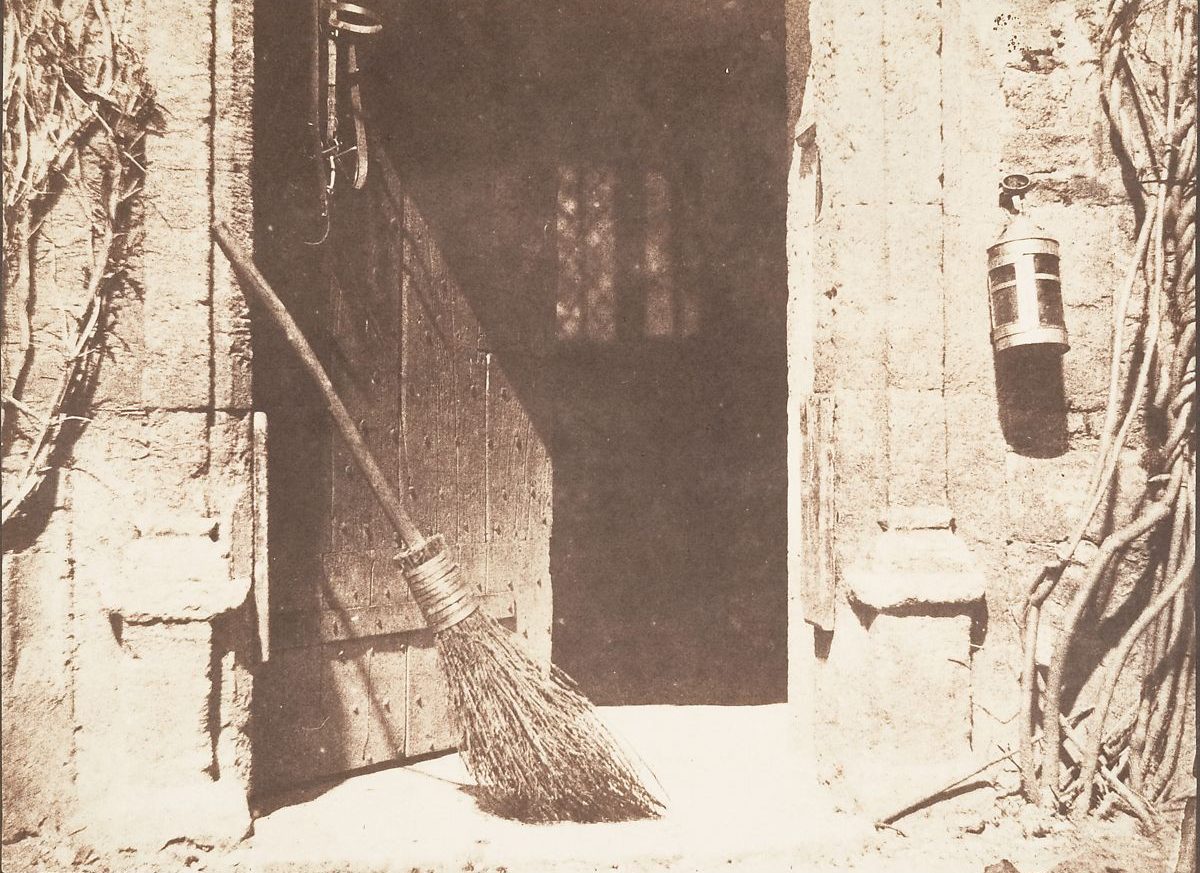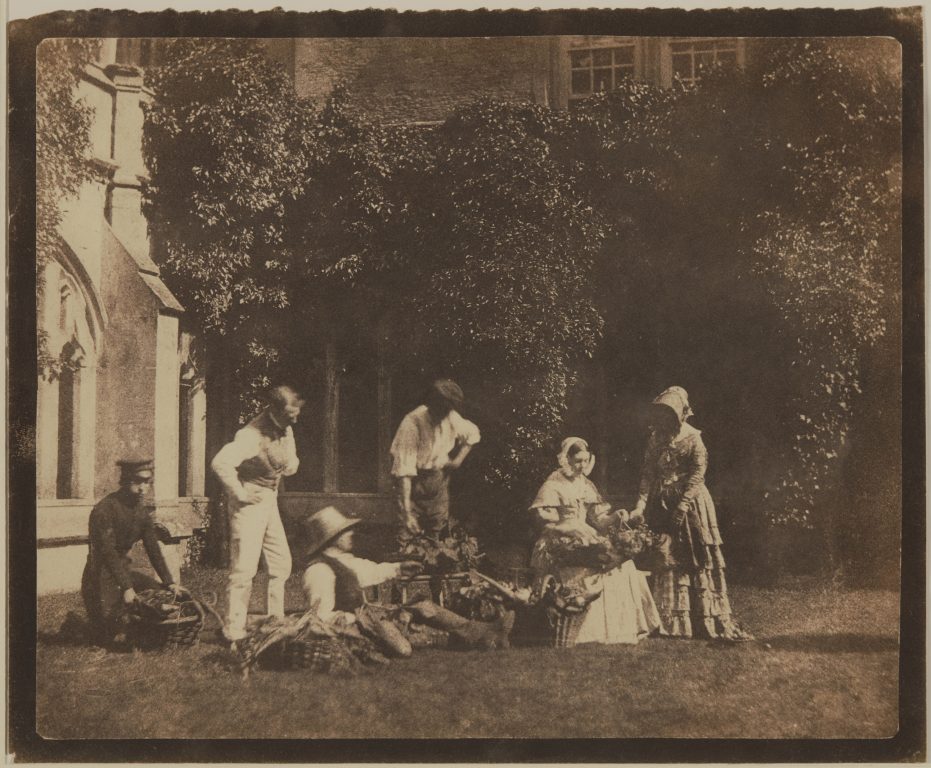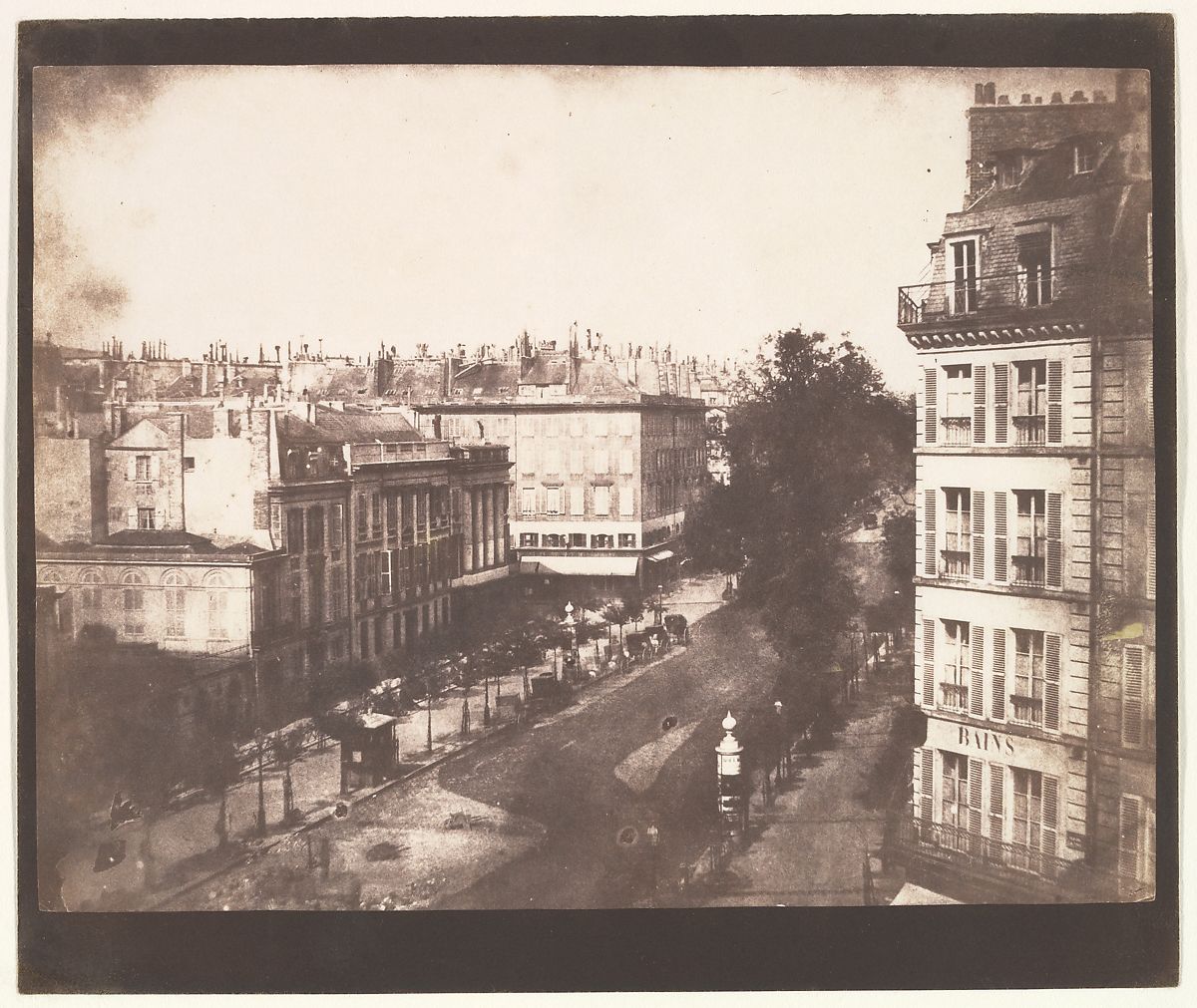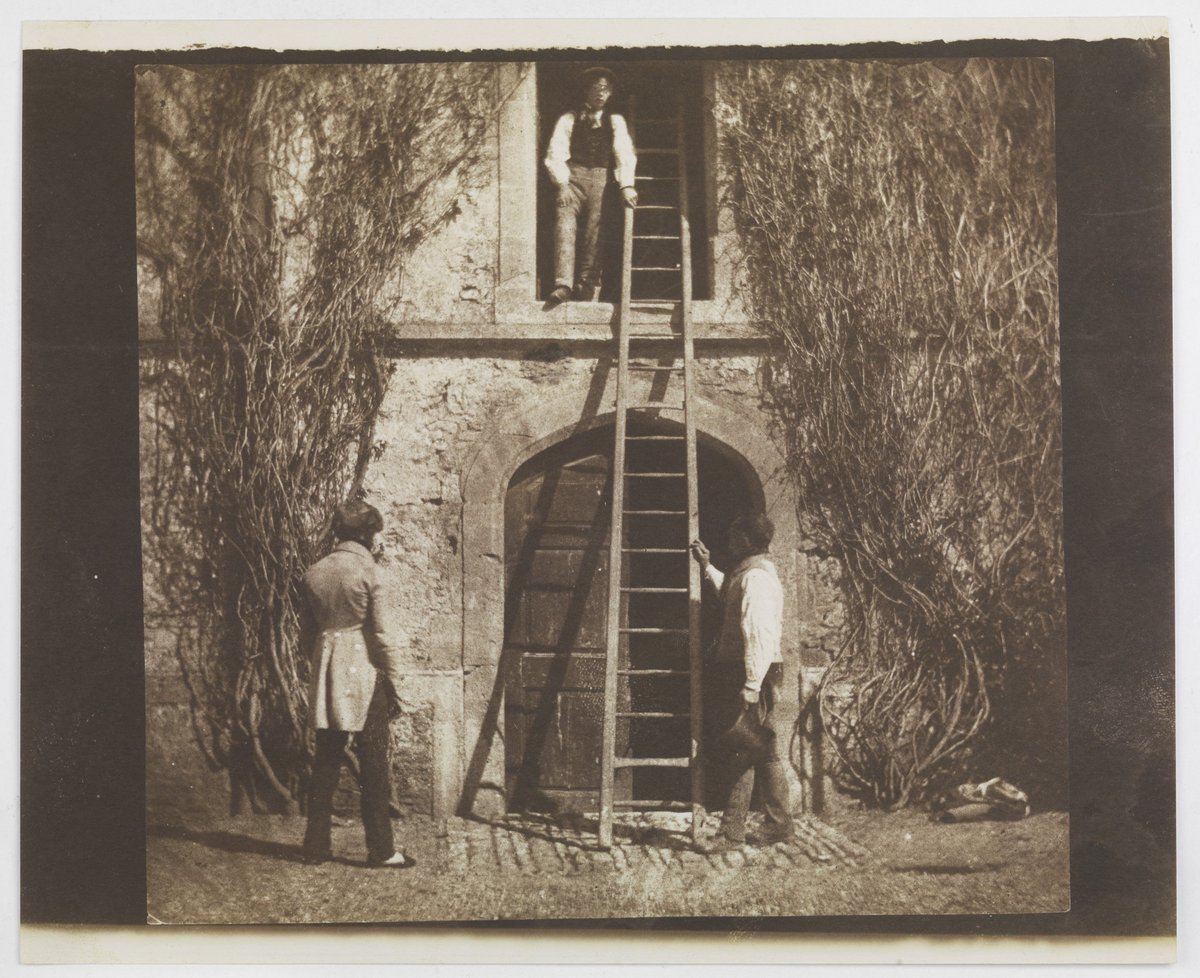It’s impossible to assert that any single person invented photography as developments were happening side by side around Europe, without one person being aware of another’s discoveries.
However, amongst those who contributed to its creation, a few stand head and shoulders above the rest.
I’m sure many of you are aware of what is officially recognised as the first ever photograph taken by Joseph Nicephore Niepce.
Any photographer asked to identify the essential characteristics of photography today would probably point to the negative – positive process and the latent image which is subsequently developed.
Whilst Niepce may have the crown for first ever photograph, the realisation of the former and the discovery of the latter were both due to the work of the relatively unknown English scholar and scientist, William Henry Fox Talbot (1800-1877).

Henry Talbot had a privileged background and, after the death of his father when he was a few months old, he inherited the family estate and village of Lacock in Wiltshire. Because of his family contacts he was able to mix with leading politicians, ministers, artists and scientists of the day.
He was educated first by private tutors and then at Harrow and Cambridge. This grounding, coupled with a considerable degree of talent and application, enabled him to succeed in fields as diverse as Classics, Mathematics, Optics, Microscopy, Chemistry, Etymology, Botany, Astronomy, Egyptology and Assyrian cuneiform.
He was elected a Fellow of the Royal Society in 1831 but, although his work covered a range of subjects, it is for the development of new photographic techniques that he is best remembered today.

Talbot began his photographic research because he was unable to sketch scenes on his honeymoon at Lake Como, in Italy. He dismissed his attempts as “traces on the paper, melancholy to behold” and resolved to find a way to capture nature more faithfully. He was convinced that, by using a camera obscura, there must be a way to cause “natural images to imprint themselves durably and remain fixed upon paper”.
The method he chose to explore this idea was chemistry, and within a few months, he had found the answer.
Years before, Thomas Wedgewood, son of the famous potter, and the scientist Humphrey Davy had experimented with the known scientific fact that silver salts darkened under the influence of light. They had managed to obtain the negative image of objects but had not been able to fix the image.
In 1834 Talbot, unknowing of previous research, began to experiment along the same lines, fitting his scientific work with his duties as a Member of Parliament. He soon discovered that washing fine – quality paper in a weak solution of common salt and then, once it had dried in another solution of silver nitrate, caused the whole surface of the paper to blacken evenly when exposed to sunlight. If an object such as a leaf or a piece of lace was placed on the paper, only those parts exposed to the sun would darken, leaving a negative image of the object.
Of far greater importance was Talbot’s realisation that, just as a small amount of salt increased the paper’s sensitivity to light, too much salt slowed the reaction and protected the sensitized paper from the effect of light. By washing the ‘negative’ in a strong solution of salt, the image became sufficiently stabilised to withstand reasonable exposure to light.
Talbot’s primitive ‘fixing solution’, though completely inadequate by today’s standards, was a major achievement for its time.
Over the next two years, he worked at improving the technique. He used Potassium Iodide as another ‘fixing solution’ and found he could increase the sensitivity of his paper by repeated alternate washings of salt and silver nitrate, and by keeping the paper moist.
In the summer of 1835 Talbot filled the grounds of his home at Lacock Abbey with numerous tiny wooden cameras. Even in bright sunlight exposure times of between 10 minutes and half an hour were required but he produced a series of photographs of his house, one of which – the view of a lattice window from within – is the world’s oldest surviving paper negative.
Not only was Talbot the first to produce reasonably permanent images on paper, but he had demonstrated what Sir John Herschel was later to call the ‘negative – positive’ system.
Experimenters before Talbot’s time – as well as Daguerre, who was a contemporary – had attempted to achieve a direct positive image and were disconcerted by the reverse image of the negative in which original white was black and right was left. From his very first experiments, Talbot realised that this was no problem.
‘If the paper is transparent’, he wrote in February 1835, ‘the first drawing (the image) may serve as an object to produce a second drawing in which the lights and shadows would be reversed.’

Salted paper print from paper negative
Talbot had perceived and explained one of the basic characteristics of photography and recognised the value of a system by which many positive copies could be made from the original negative.
In 1835 however, he left his photographic research. His family knew of the work but there is no evidence that he communicated it to any of his scientific colleagues, and for the next three years he devoted himself to other studies.
In January 1839, Talbot was shocked to hear stories from France that Louis Daguerre had succeeded in obtaining images in the camera obscura by the action of light on a prepared plate. Although Talbot had only himself to blame for not persevering with his earlier work, he now rushed to publish details and to show his own photographs.
He wrote to the Academie des Sciences in Paris claiming priority for the discovery of photogenic drawing – an unfortunate move since Daguerre’s method of making images on metal plates was very different from his own and he only succeeded in arousing hostility.
It was not long before Talbot found his own process being unfavourably compared with that of Daguerre. His own grainy photographs, it was said, looked ‘childish’ next to the beautifully detailed Daguerreotypes.
What everyone overlooked was that the Daguerreotype was a single positive image on metal, unique and unrepeatable. Talbot’s unimpressive grainy pieces of paper showed the road to the future – the concept of a negative and unlimited positive copies.
Talbot admired Daguerre’s achievements and said so. He used the Frenchman’s success and acclaim to spur himself on to improve his own process.
Next, Talbot concentrated on the use of gallic acid and by September 1840 he had made a breakthrough. Paper was first prepared with silver iodide and then washed with an ‘exciting liquid’ – a solution of silver nitrate, acetic acid and gallic acid. The paper was then dried and exposed in the camera.
The result was a latent image ‘brought out’ or developed by washing it again in the gallo-nitrate of silver. Exposures in bright outdoor conditions were reduced to 30 seconds; even moderate daylight would produce considerable success. Suddenly portraiture was a practical proposition and photography was brought within the reach of ordinary people.
This time, Talbot was quick to publish his discovery and to patent it. He called his new process Calotype, from the Greek ‘kalos’ meaning beautiful. He even financed his former manservant Nicolaas Henneman, to open the world’s first commercial ‘developing and printing’ plant, first in Reading and then in Regent Street, London.
Between 1844 and 1846 Talbot published a six-volume collection of calotype prints under the title The Pencil of Nature, the first book ever produced for sale with original photographs. The American photo historian Beaumont Newhall has likened its importance in the history of photography to that of the Gutenberg Bible in printing.
Some of these photographs reveal that, as well as being a scientist, Talbot could also produce beautiful works of art. Other photographers such as Robert Adamson and David Hill in Scotland, seized on the calotype as a way of expressing themselves with this new medium and met with considerable success.
But the acclaim that Talbot felt was his still eluded him and he spent much time in litigation over photographic patents he had taken out. It was an unhappy time during which he made many enemies. He was a shy and essentially private man and was often distant and even abrupt towards strangers – characteristics which resulted in little sympathy for him and what he was trying to do and left him hurt and puzzled by the lack of recognition for his work.
Talbot gave up his battle over patents in 1855, but by then Frederick Scott Archer’s invention of the wet plate collodion process rendered the calotype process obsolete. Despite this Talbot retained his interest in the photographic sciences and went on to develop major innovations in photo-engraving techniques. His major contribution nevertheless remains his work in the pioneering days of photography. What he achieved, is still the basis of photography today.

